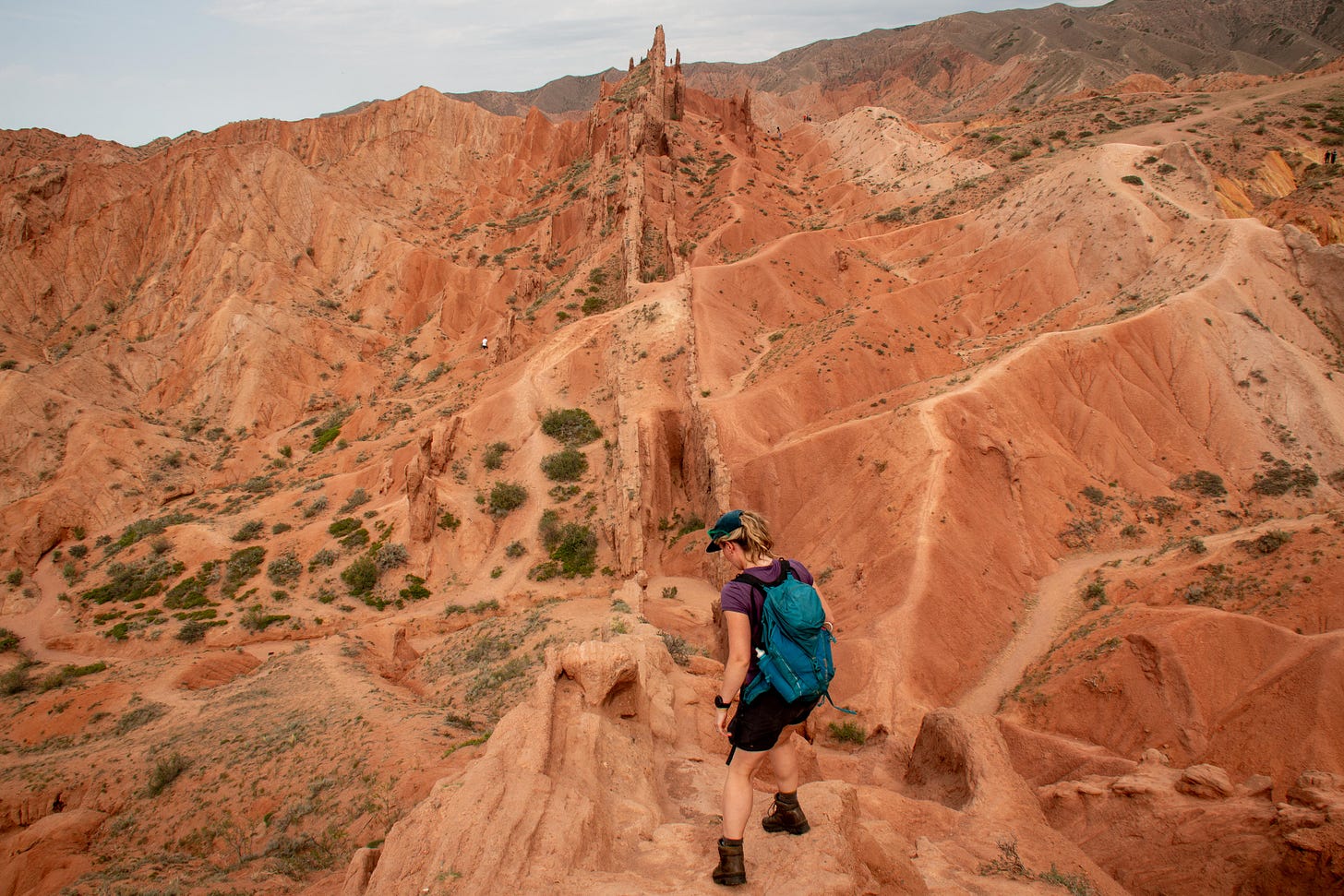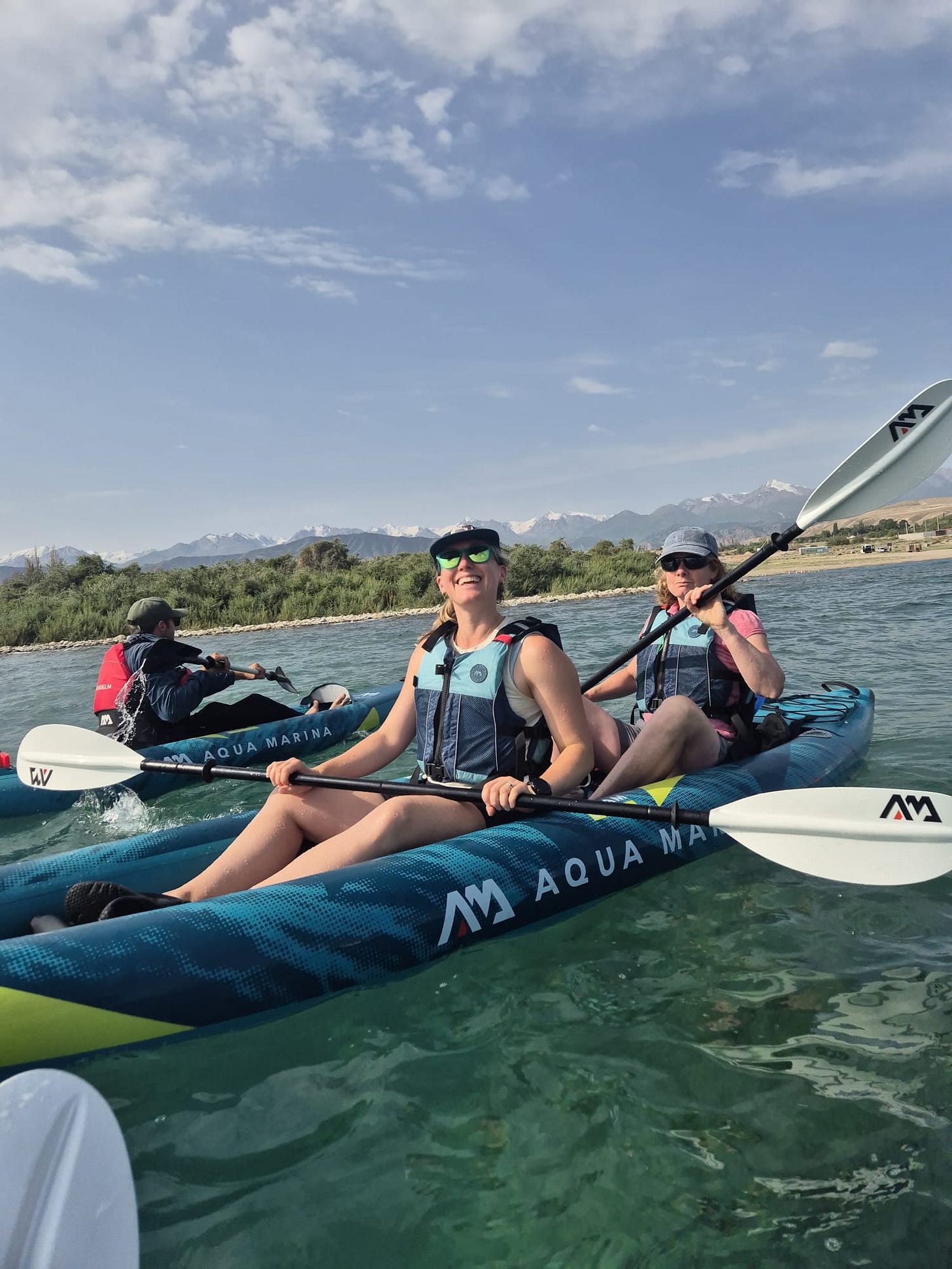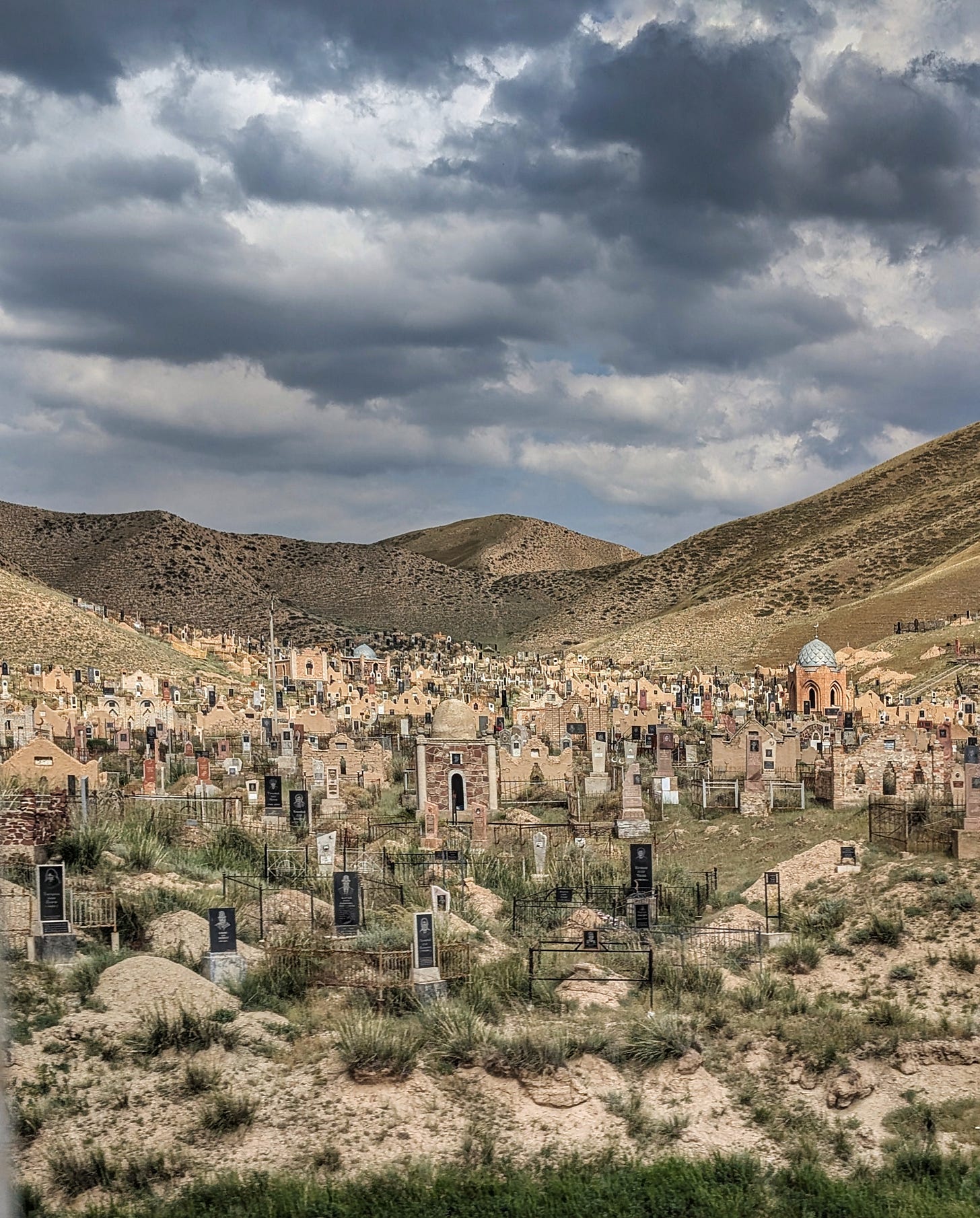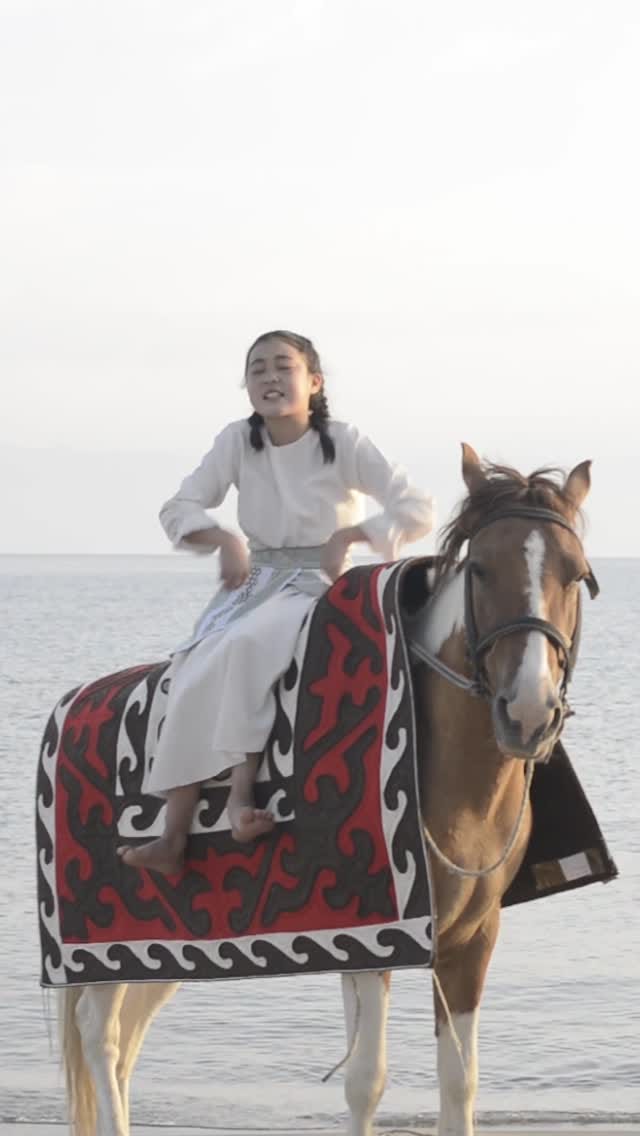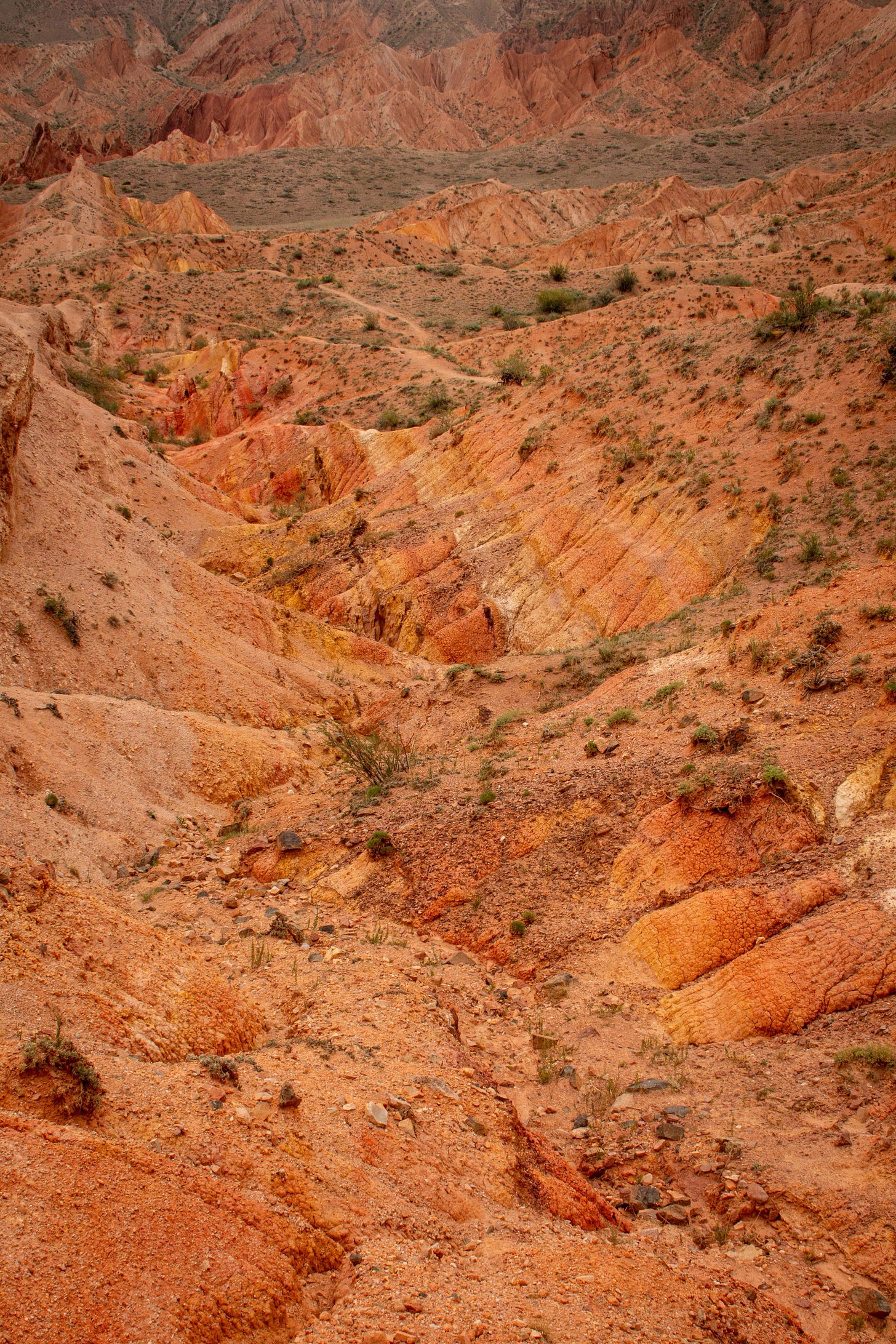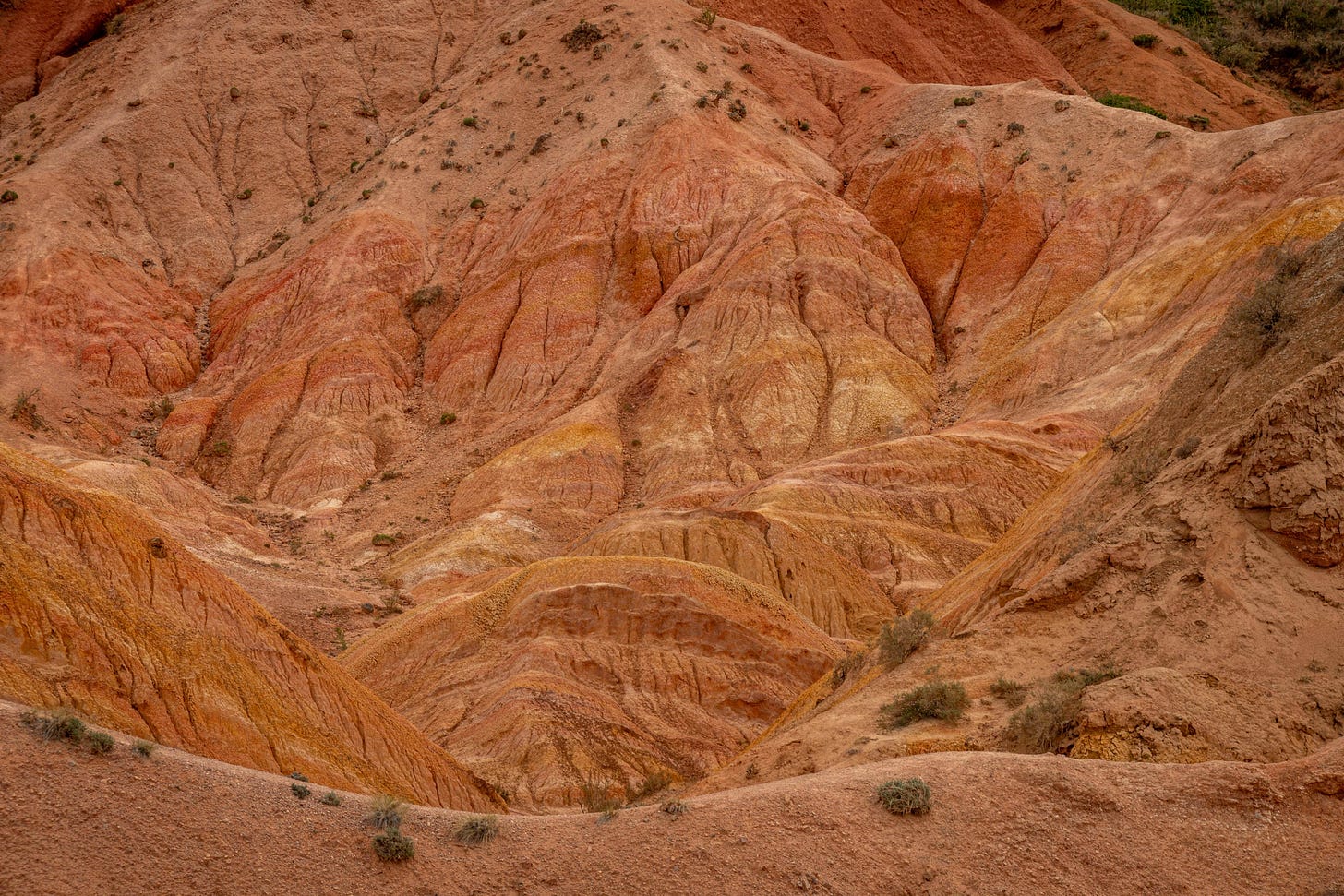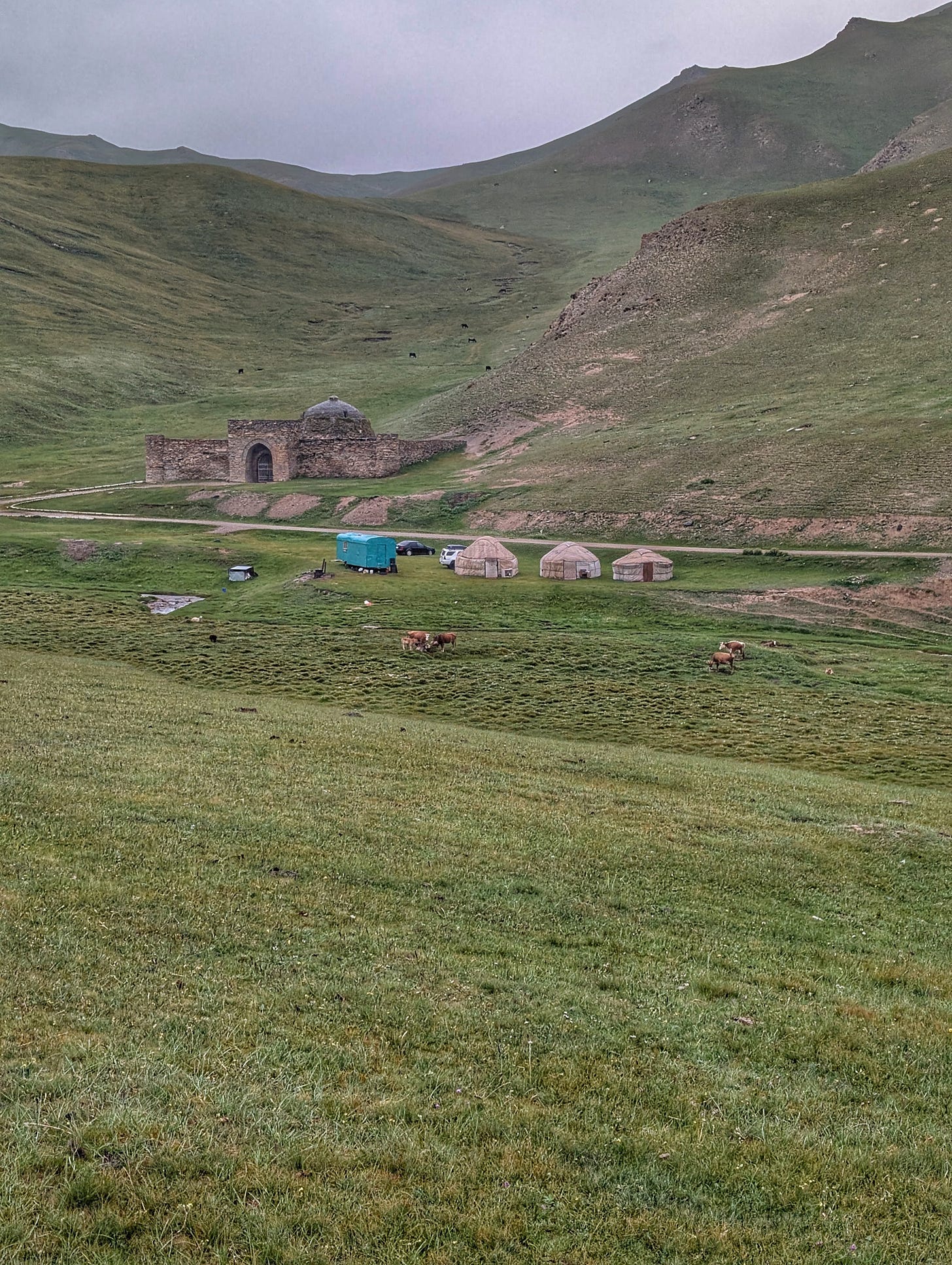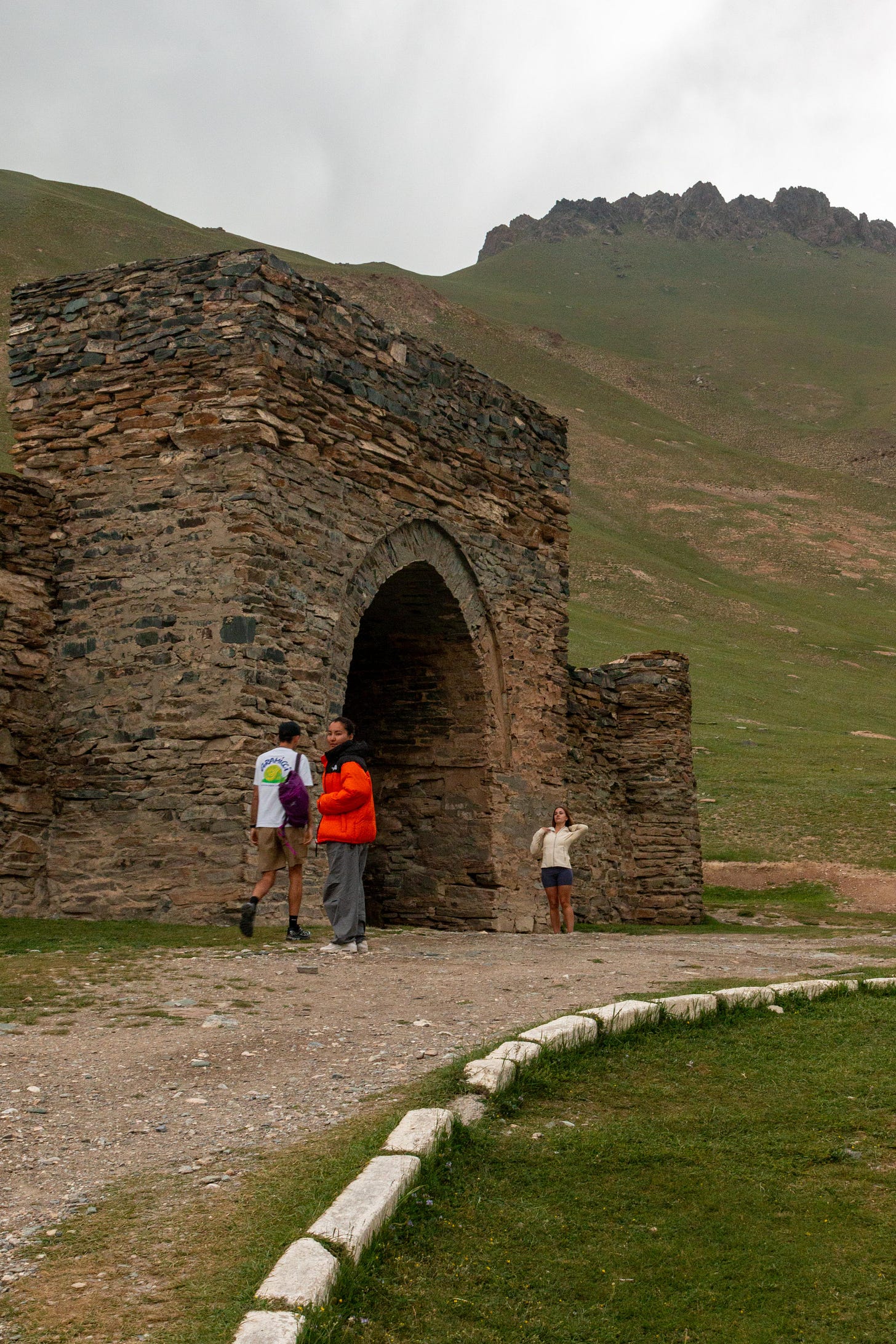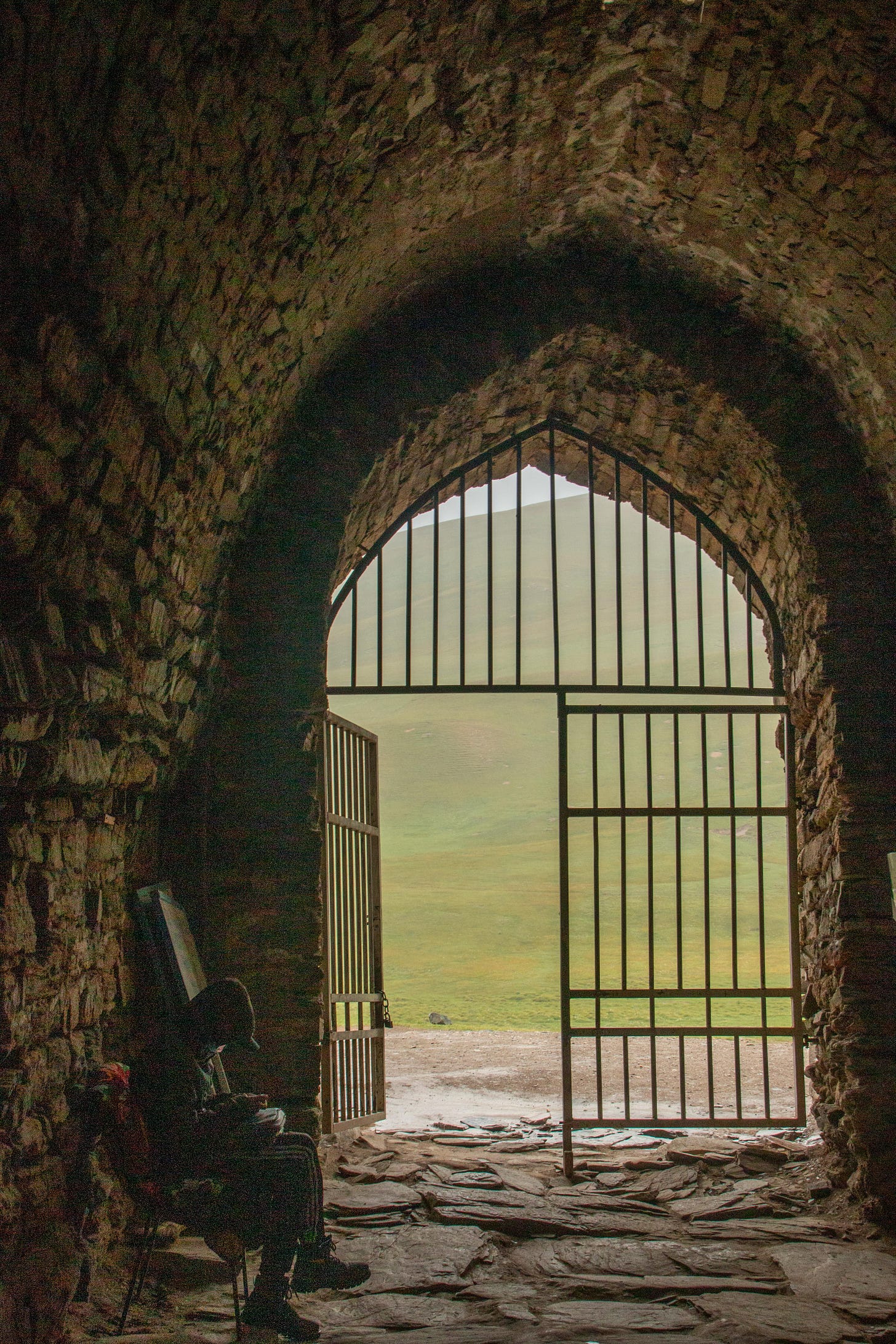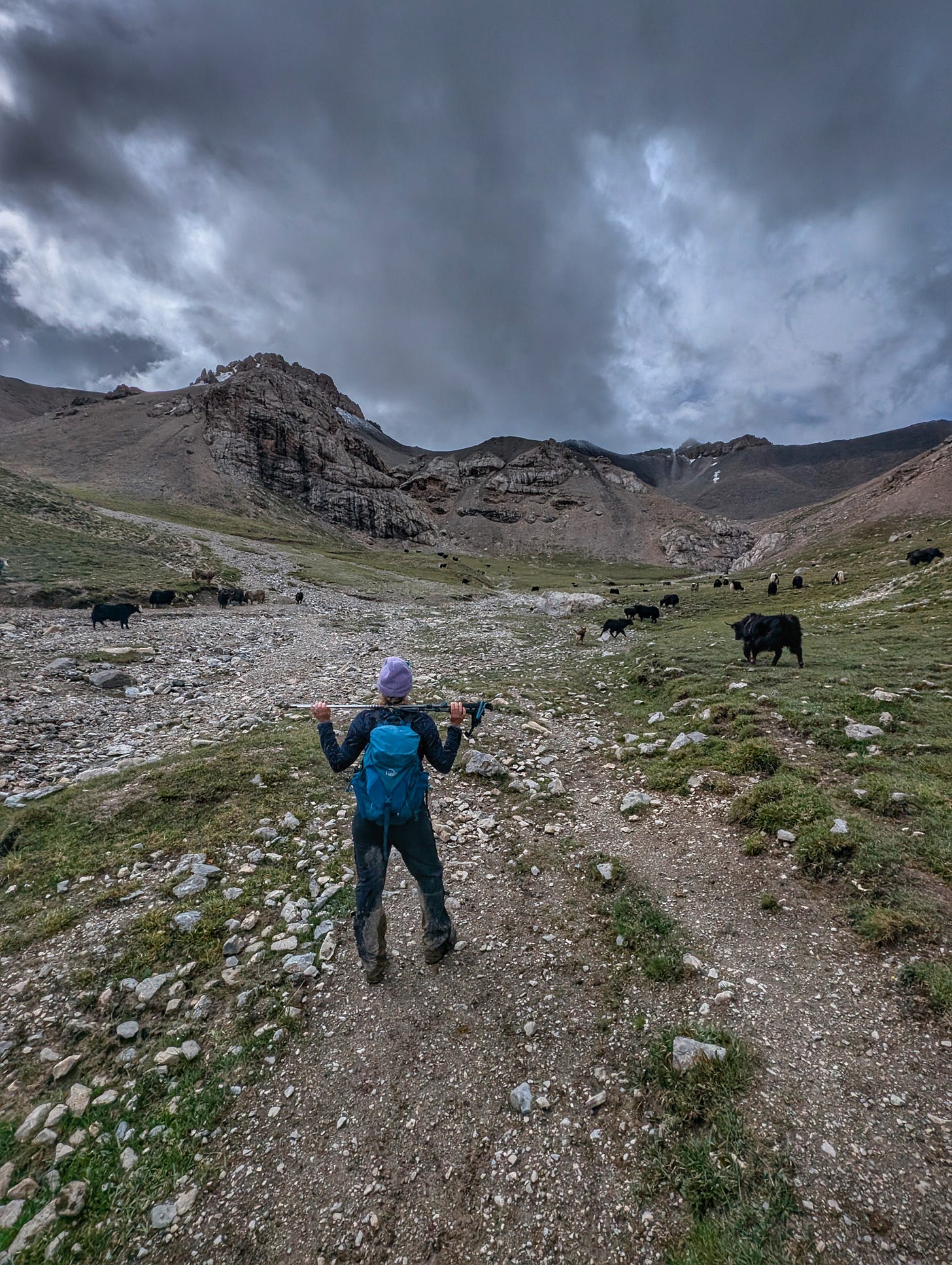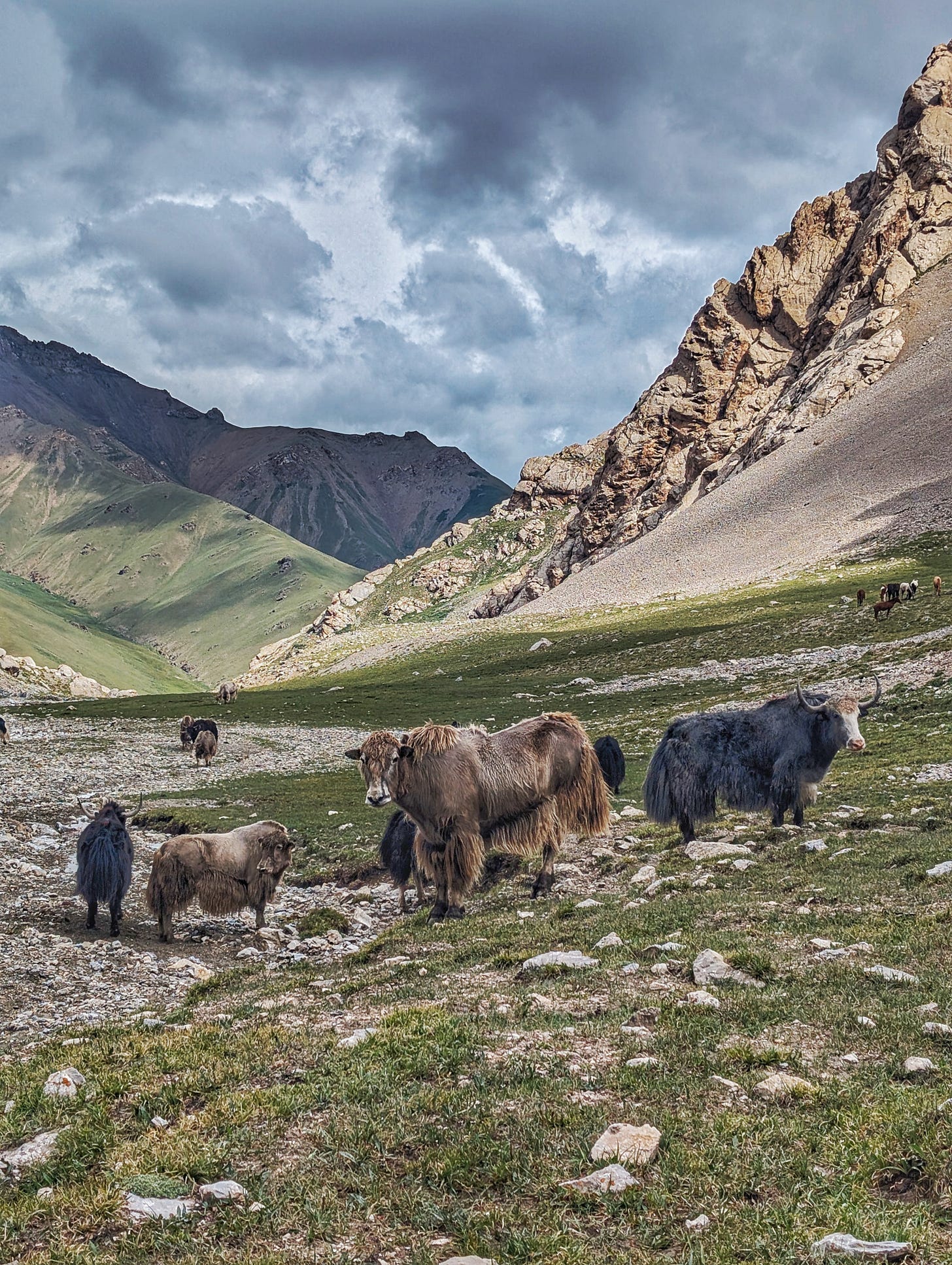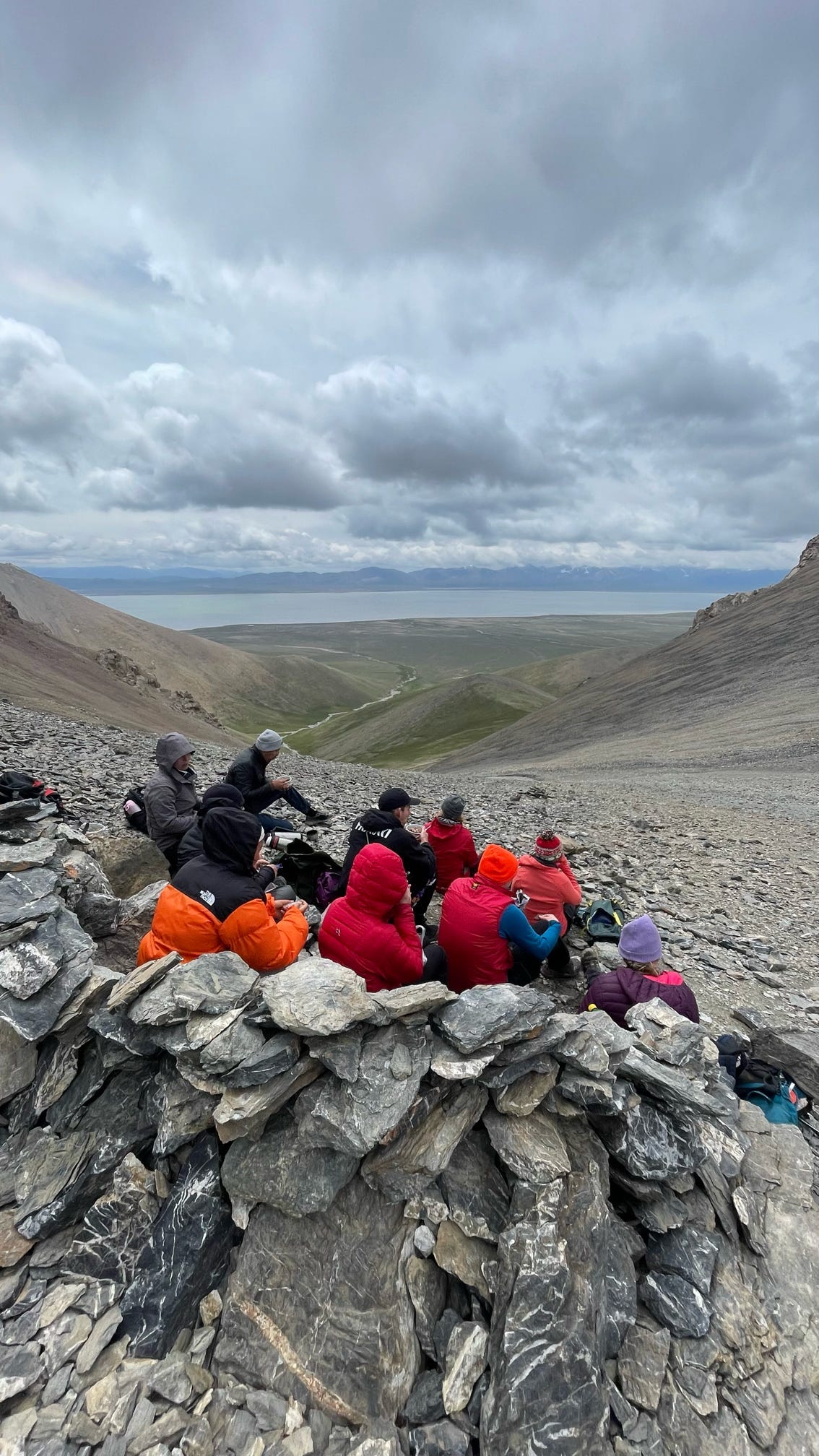Trails of memory: finding history and folklore on the Silk Road
Stories, songs and landscapes keep the Silk Road alive in Kyrgyzstan.
Choppy swells barged against our kayak as we rowed towards the shore. In the distance, crescent moons atop the sprawling necropolis winked from the opposing crags. It was disquieting reminder of the country’s ancient, layered past.
I’d come to Kyrgyzstan chasing fragments of the Silk Road, expecting ruins and museums. But what I found was something harder to pin down: a place where history is still alive. Not written, but spoken, sung, and shared.
‘Marco Polo visited Issyk Kul, and loved it’s beautiful waters. He even drank from the lake, which made him ill.’ Adam, our guide for the kayaking trip, explained.
‘Issyk Kul was a popular area along the Silk Road. During Marco Polo’s time Lake Issyk Kul’s water line was 8 metres lower than where it is today. Archaeologists did some diving surveys a few years ago and found remains of cities in the shallower ends of the lake.’
Gazing down at the saline sapphire waters, it wasn’t hard to imagine whole cities laying undisturbed. Issyk Kul stretches over 180 km with a depth of 668 metres at its lowest point. With the Tian Shan mountains enclosing the lake both north and south, the lake’s waters have been a welcome oasis for traders and travelers for centuries. Like the lake’s depths though, the Silk Road’s history here is elusive.
Historians dispute Marco Polo’s stop at Issyk Kul. There’s no written record confirming he visited or fell ill. Much of his travels along the Silk Road were through China1.
However there are dozens of versions of Polo’s Il Milione book, which historians also admit make it difficult to trace Polo’s journey through Central Asia with certainty. Not only that, but marine archaeologists have found the remains of a medieval city in Issyk Kul’s waters2.
What I was learning on this trip through Kyrgyzstan was that the Silk Road was not a singular, traceable highway, but a constellation of shifting routes across sea and land through Central Asia, China and India to Europe, shaped by politics, climate, and people’s memories.
It was in this tangled trail of persistent truths and elusive tales that we met 13-year-old Aruuke.
At a yurt camp beside Issyk Kul, we gathered for a rare performance of the Epic of Manas, offered as part of a photo project by Ivan Ryaskov. Usually, these oral recitations are reserved for local audiences and events. Watching a performance is rare for Western visitors. What made this moment even more remarkable was the performer, Aruuke.
Traditionally, menaschi (‘the tellers of Manas’) are adult men, trained to recite the 900,000-verse epic from memory. Passed entirely through oral tradition, The Epic of Manas tells the story of Manas and his descendants as they unite and defend the Kyrgyz people. This cultural touchstone combines history, folklore, and genealogy to explain the origins of modern Kyrgyzstan. It’s one of the longest epic poems in the world, composed in a trance-like chant that can last hours.
Much of the written historic material of Kyrgyzstan and its role in the Silk Roads originate from its static neighbours in Persia, Europe, China and Russia. While the Epic of Manas isn’t traditionally a wholly historical poem, it contains rich details about empires, tribes, and other socio-economic factors of its time.
During Stalinism, the Kyrgyz linguist Kasym Tynystanov tried repeatedly to get the Epic of Manas translated and published for decades. Stalin’s Propagandist-in-Chief refused, ironically calling the poem ‘an example of "bourgeois cosmopolitanism"3. It wasn’t until 1995, to commemorate the 1,000-year anniversary of Manas’s birth, that the Epic of Manas was fully translated and published in English.
Watching Aruuke deliver it with confidence and poise was breathtaking. Time folded around us; I imagined traders resting here centuries ago, listening to a similar voice recount a tale of unity, survival, and identity.
Reading about Manas later, a verse stayed with me:
The mountains fell apart, turning into ravines,
Ravines shook, turning into mountains.
Many seas became extinct
Leaving only their names behind.
Every fifty years, people were new,
Every hundred years the earth was renewed.4
For the nomadic Kyrgyz people, people came and went, as did cities and natural wonders. In a world of constant change, it was memory — not written records, nor monuments — that became a means of continuity.
This idea echoes in my head as we hike through the Skazka Canyon, otherwise known as Fairytale Canyon.
Rainbows of ochre, mustard, taupe, and carmine swirl around our heads. Wandering through this crumbling maze of chimneys and ridgebacks it’s not hard to assume how this environment inspired so many tales.
Legend states a dragon fell in love with a woman from a city in Issyk Kul. She rejected his advances, and the dragon tried to flood the cities each night by drawing water from the wells in retaliation. The locals countered his attacks by covering the wells in golden lids.
One night the woman forgot to cover a well. The cities and everyone in them are destroyed, and the waters swelled to form what we know today as Lake Issyk Kul. The dragon, so distraught from his destruction, turns to stone, forming Skazka’s unique rock formations.
Three stories of flooding. Surrounding Issyk Kul in the Tien Shan mountains are medieval settlements, towers and rock inscriptions that reinforce other historical accounts of Issyk Kul’s importance on the Silk Road5. In Issyk Kul itself though, little archaeological evidence reflects its grandiose reputation6.
While researchers are still excavating more evidence of Issyk Kul’s importance along the Silk Road, I wondered: did oral traditions and folk tales preserve a truth that archaeologists have yet to fully unearth?
After hours on windy gravel tracks we arrived at Tash Rabat, an important resting point along the Silk Road. Nestled between gnarled hillsides with the snowy peaks of the At-Bashy range hovering in the distance, the grey stone caravanserai cuts a lonely figure in the landscape.
A former 15th century Buddhist monastery turned Silk road outpost, at 3150m, it’s the highest caravanserai in the world.
Life on the Silk Road could be a dangerous one. If natural disasters weren’t awaiting you when traversing mountain ranges, droves of bandits could be sitting in ambush. Illness and lack of resources were other challenges traders regularly battled on the road. The threat of death and its cousin, financial ruination, were always present on the Silk Routes.
Caravanserai offered a crucial respite for traders. Shelter, food and water, and protection were available, plus it gave traders opportunity to acquire news and make connections. After days of constant vigilance, the little comfort and security caravanserai offered would have been welcomed by traders.
Here was the history I’d expected: stone, structure, timeline. But even here, the questions outnumber the facts. Was that deep pit a prison? A well? An escape tunnel? The guides offered theories, but no certainty.
These questions swirl in my head as we hike pass the caravanserai on a portion of the Silk Road to Panda Pass. Rain thunders down and misty whorls of cloud converge with the Tash Rabat river. Without Gore-tex and Vibram soles, the trek is a hard, soggy battle up slick clay hillsides and smooth scrambles. A German Shepherd adopts us early on the hike, bounding off on side-quests before re-emerging as inexplicably as an apparition in the vapours. We call him Bobby.
Eight kilometres in, and a chirruping chorus heralds a break in the showers. Marmots, hundreds of stocky brown cheeks with protruding teeth, squat along the hillsides and comment on our passing. A herd of horses whinny in reply and yaks grunt in the distance. I wonder if these yaks and horses were ancestors of livestock that escaped on the Silk Road.
The trail was muddy, steep, and slow-going at times. Yet, it felt fitting. The Silk Road, I was realising, wasn’t about monuments. It was about movement. About people and animals and stories migrating through mountains.
A final turn, and then a blast of icy wind proclaims the top of Panda Pass. Below the emerald waters of Chatyr Kol lake and just beyond that, as Aruuke points out, is the border to China. Looking at the terrain from a Golden Eagle’s eye view, the Tien Shan range’s vastness is beautiful in its ruggedness and intimidating as it stretches beyond the horizon. The knees tremble at the thought of traversing through these further.
Huddled by a shelter, we tuck into snacks and take turns feeding Bobby some chicken morsels. Bobby is his trail name, but I wonder what his actual name is back home, down by the caravanserai yurts. How many other hiking groups had he trailed along this route?
Perhaps that’s where I had been going wrong with the Silk Roads. I’d come looking for a historical site. But the Silk Roads were never static. They were living trails of memory. Here, history isn’t written. It’s walked and shared.
Bressanin, A. (2024). The Travels of Marco Polo: The true story of a 14th-Century bestseller. [online] Bbc.co.uk. Available at: https://www.bbc.co.uk/travel/article/20240107-the-travels-of-marco-polo-the-true-story-of-a-14th-century-bestseller.
Gudzev, Vladimir. “Kyrgyzstan’s Lake Issyk-Kul: Touching Eternity.” X-Ray Magazine, xray-mag.com/content/kyrgyzstans-lake-issyk-kul-touching-eternity. Accessed 24 July 2025.
Laruelle, Marlene (2015). "Kyrgyzstan's Nationhood: From a Monopoly of Production to a Plural Market". In Laruelle, Marlene; Engvall, Johan (eds.). Kyrgyzstan beyond "Democracy Island" and "Failing State": Social and Political Changes in a Post-Soviet Society. Lexington Books. pp. 165–84. ISBN 9781498515177.
Köçümkulkïzï, E. (2005). Manas introduction. [online] www.silkroadfoundation.org. Available at: http://www.silkroadfoundation.org/folklore/manas/manasintro.html.
Akmatova, L. and Imankulov, J. (n.d.). Planning and Management. [online] Available at: https://www.getty.edu/conservation/publications_resources/pdf_publications/pdf/2nd_silkroad4.pdf.
en.unesco.org. (n.d.). Kyrgyzstan | Silk Roads Programme. [online] Available at: https://en.unesco.org/silkroad/countries-alongside-silk-road-routes/kyrgyzstan.



